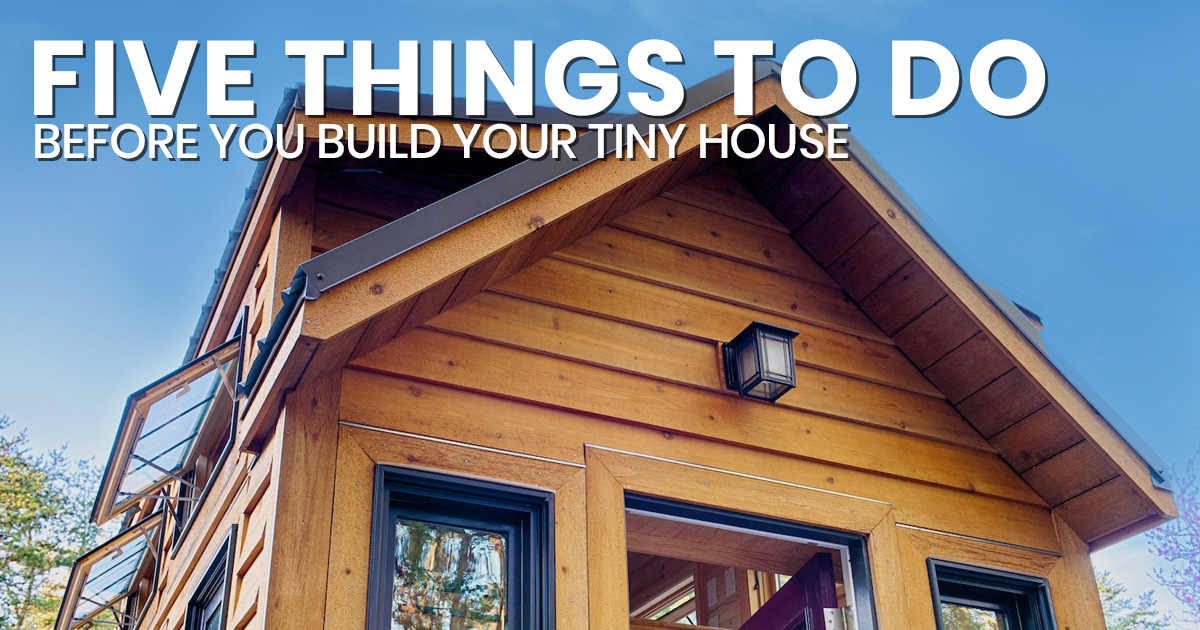
While that deciding to build a tiny house is exciting, I realized that I needed to get my butt in gear and accomplish a whole slew of tasks before I’m ready to buy a trailer for my tiny house on wheels build. Today I’m sharing my to do list with you, and I hope it can help you prepare for your build too – whether you’re starting next week or next year.
1. Be Sure It’s What You Want
This seems like a given, but there’s more at work here. If you want a tiny house because you think they’re cute, you might need to do a little more soul searching. If you want a tiny house because it’s the logical next step in creating a more intentional way of living, well…now we’re getting somewhere.
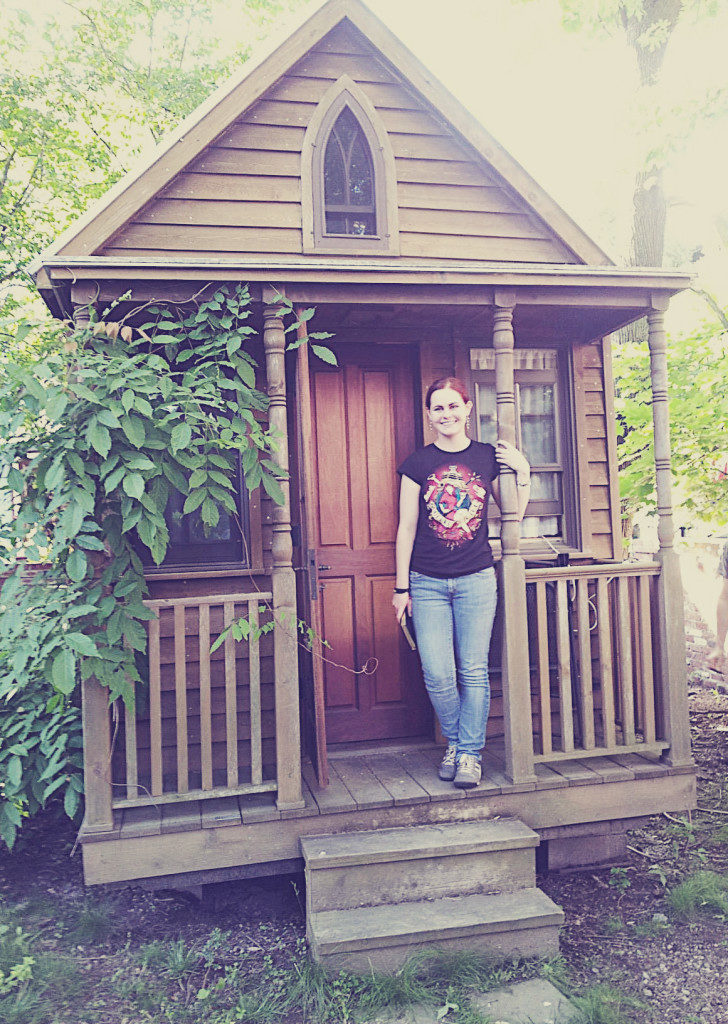
Me, on the porch of Jay Shafer’s original tiny house, wearing unflattering pants.
How do I know a tiny house is right for me? Well…
- I’ve wanted to build my own house since I was eight years old.
- I love small, cozy, confined spaces.
- I’ve always been passionate about good design and creating homes full of personality.
- I want to learn new things, because it improves my life and makes me a better person.
- I want to feel the pride that comes with tackling a big project.
- I care about my impact on the environment.
- It does not make sense for me to buy a traditional home because I don’t know where I’ll end up settling down someday.
- I’m a tiny person (5’2″) with very little stuff and few worldly needs.
Your reasons might be different. Be honest with yourself and trust your gut! You know yourself and your own motivations.
Tips:
- If you are going into a tiny house build with your partner or family, agree going in that if anyone decides they’re done with the tiny house life, that you’ll both/all find another living solution. Not feeling trapped will work wonders when it comes to living peacefully together in a tiny house.
- If you’re on the fence, there are other ways to live smaller without building a tiny house. Even just downsizing to a small house or apartment can dramatically change your outlook.
- At the end of the day, a tiny house is just an object, and objects don’t change your life for the better. Only you have the power to do that.
2. Connect with Tiny House People
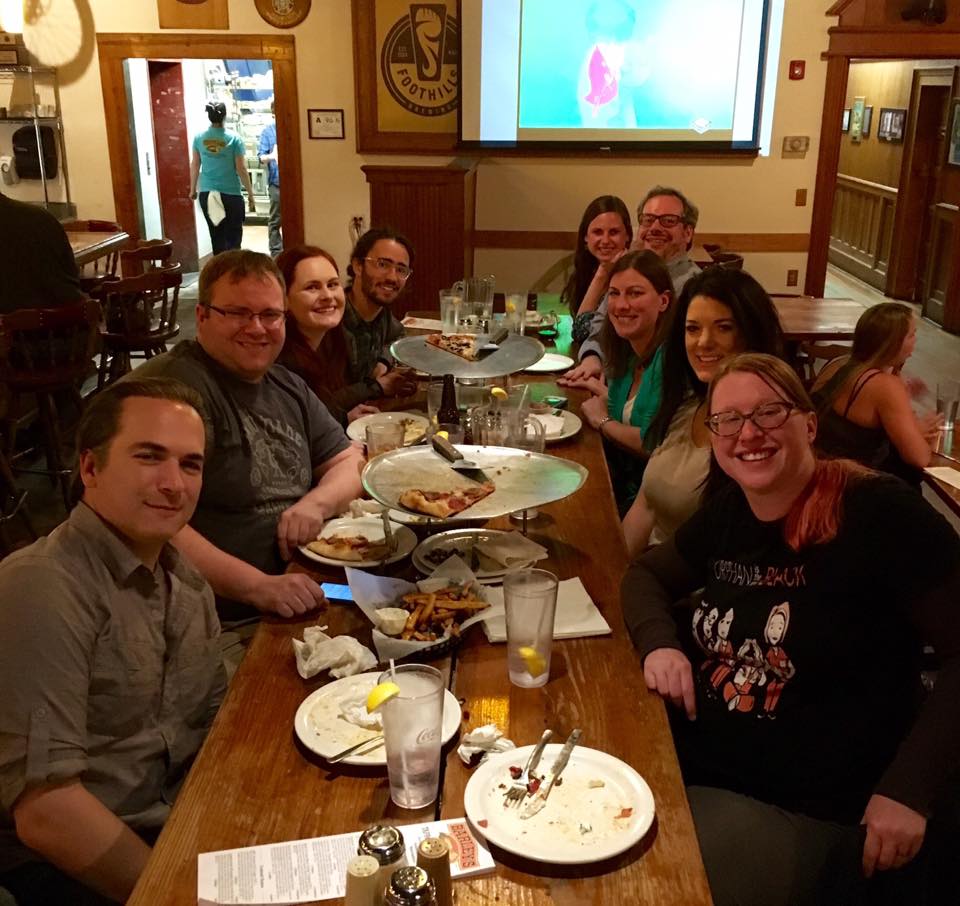
Tiny house people love nothing more than sharing pizza and beer.
Even with the wealth of information available online, you’ll still have questions that can only be answered by people who have gone through the building process. Also, tiny house people are just plain cool and interesting and definitely worth knowing!
I’ve been lucky to meet so many wonderful members of the tiny house movement through my work, but to get here, I had to seek them out myself. As an introvert, this is much easier said than done. In the beginning, I had to do a lot of hunting to find other people who were just as excited about tiny houses as I was.
Tips:
- Meetup.com is a goldmine. If you’re in a major metropolitan area, chances are high that there is a tiny house enthusiasts meetup nearby. If there isn’t one already, why not start a group yourself?
- If there isn’t a tiny house meetup group, search for related groups about minimalism, gardening and permaculture, or prepping, and you’re bound to meet other people who are interested in tiny houses!
- Tiny house events are popping up all over the country, and they’re a great way to meet cool folks. If you’re pretty convinced you’d like to live tiny, the Tiny House Conference is a great place to make friends and ask people your questions.
- Don’t just hound people on the Internet, begging them for a tour of their tiny house. Form strong give-and-take friendships with tiny house folks just like you would with anyone else.
3. Pare Down Belongings
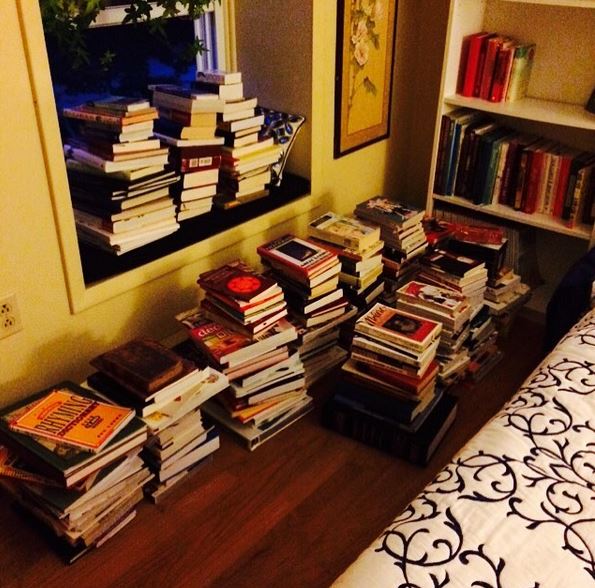
I once owned over 300 books. I now own 30.
Paring down your stuff is a huge part of living the tiny life. Last summer, I moved to Charlotte from Boston, and I took the move as an opportunity to bring only the things that could fit in the back of my Honda CRV. I got rid of two thirds of my clothing and 90% of my books – something I thought I could never do – along with decades’ worth of accumulated crap from my school years. It was surprisingly easy to distinguish trash from treasure once I got in to a rhythm. Driving down the highway to my new home, with a trunk full of my most precious possessions, was a liberating feeling.
Tips:
- “Have nothing in your house that you do not know to be useful or believe to be beautiful.” – William Morris
- For analytical minds: try the box method. Empty the contents of a drawer, closet, etc. into a big cardboard box. Each time you use an item from the box, it can return to the drawer. Whatever remains in the box after three months is something you don’t need in your daily life and you can safely donate it.
- For intuitive minds: If you have more of an emotional attachment to objects like I do, I highly recommend the book The Life-Changing Magic of Tidying Up by Marie Kondo. It has gone viral for a reason, and I couldn’t have decluttered without it. That book is worth its own blog post, which I will write soon.
- Budget enough time for this crucial step. One tiny house family I know took a whole year to declutter.
4. Assess Needs
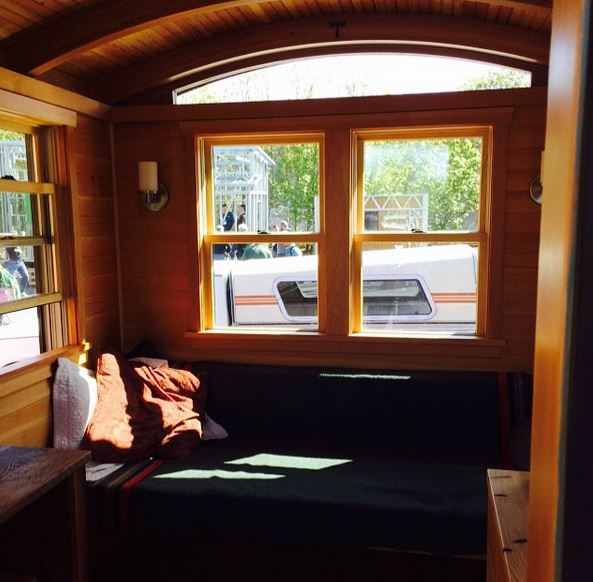
Dee Williams’s petite vardo at the 2015 Tiny House Conference.
This is what Dee Williams from Portland Alternative Dwellings calls “playing anthropologist.” A lot of what we think we need in a home is marketed to us through building trends and realtors. A tiny house is a chance to shed the excess and create a home that fits you like a glove. For this step, I wrote a big list to brainstorm all my weird quirks and how they affect my interaction with my living space.
For instance, I noticed that I never use more than two stove burners at a time, but I do use my oven very frequently (roasting vegetables is the most reliable way to trick myself into eating them). For me, an oven would be a necessity.
I find that I spend most of my leisure time lounging around in bed rather than on the couch. Aside from sleeping, I do all my reading, drawing, writing, and music-listening in bed. I’ll probably forgo a lounge space in favor of a dining area, and design a luxurious sleeping loft that will double as my creative haven.
I also dye my hair monthly, so an open shower stall won’t work for me unless I want to flood my whole house as I rinse out the dye. I think a stock tank bathtub would work well for me.
Tips:
- Try the Post-It Note Method: Stick a Post-It Note next to each doorway in your home. Every time you leave a room, write down what it is that you’re doing in each room. After a month or so, get a glimpse into how you actually use your space.
- Design for the life you have, not the one you want. This is the equivalent of keeping “skinny pants” in your wardrobe. You want to feel comfortable in your home, not guilty.
- If you have hobbies or accoutrements that require a lot of space, consider outbuildings or off-site storage, or outsourcing that hobby to a different location (e.g. an artist’s studio).
- Remember: our needs are surprisingly few and easily met.
Step Four: Figure Out a Floor Plan
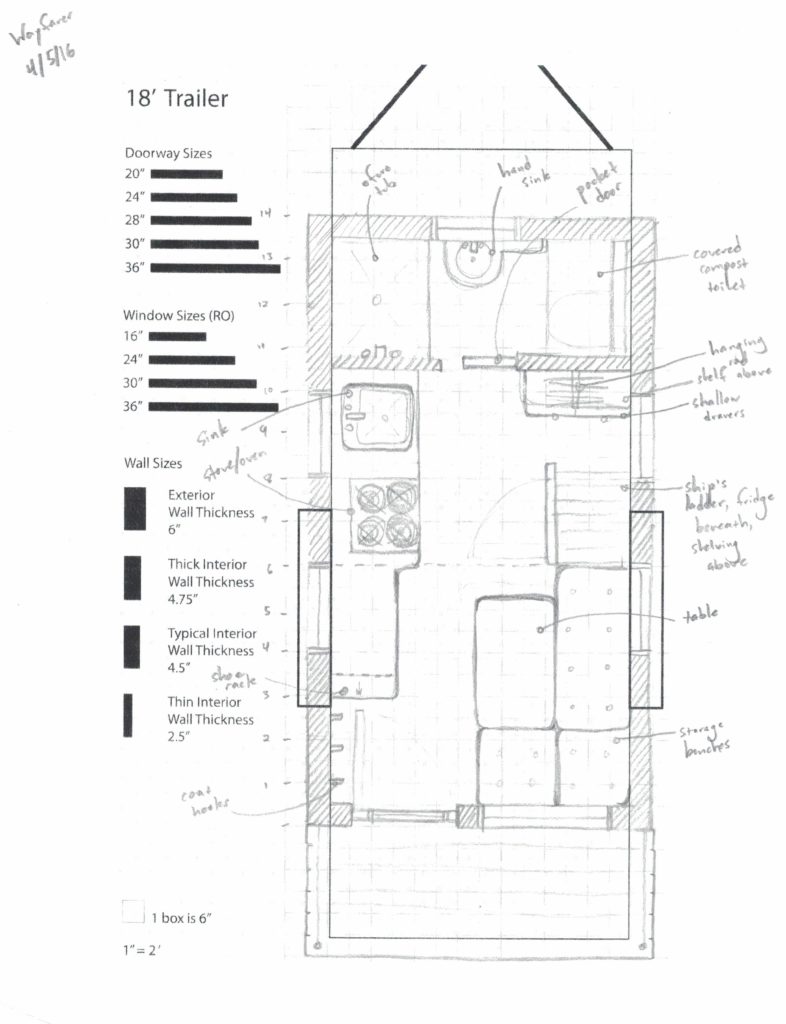
My latest tiny house layout, which I have already overhauled completely.
Right now, I have a folder on my desktop with 39 scanned, hand-drawn floor plans. To be fair, I’m a big nerd and I’ve been drawing these for four straight years. But whether it’s digital or on paper, it’s important to translate your design ideas into a visual medium.
There are lots of great ready-made tiny house floor plans on the market. We’ve reviewed our favorite plans to help you pick the one that’s right for you – click here to check it out. But because everyone’s needs are different, don’t be afraid to modify an existing plan to better suit your lifestyle.
Tips:
- Carry a measuring tape with you wherever you go. Measure chair heights, counter widths, the rises and runs of stair steps – it’s important to know common dimensions of different elements so you can accurately plan for them.
- Measure yourself! Know how much space you need to feel comfortable. My needs as a 5’2″, 130 lb. woman will differ from the needs of a 6’3″ 275 lb. man.
- Don’t forget to design space for your clothes hamper, kitchen trash can, recycling and compost bins, suitcases, bulk paper goods storage, brooms, and other cleaning implements.
- Include empty storage space in your design. Because you’re alive, you’ll probably still acquire new things after you move into your tiny house. Give yourself some wiggle room.
- Strive for an excellent design, not a perfect one. If you stress too much about getting things absolutely perfect, you’ll never get off the ground.
5. Work with an Expert
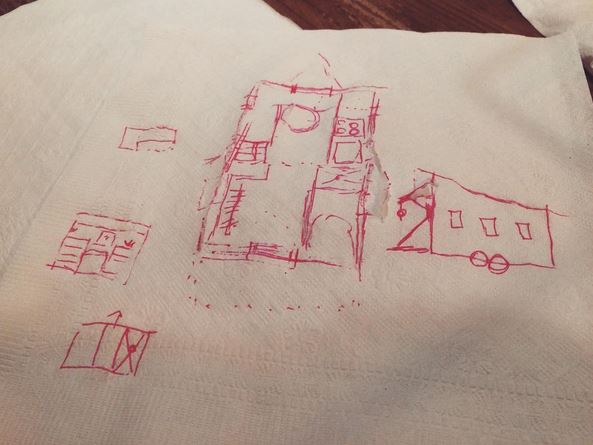
Great ideas always begin on a napkin.
Optional, but highly worth it. Even if you have a pretty strong grasp on what you’re doing in terms of your design, it never hurts to have an expert offer their advice. At the Tiny House Conference after party, I hungrily listened to Lina Menard and Ethan Waldman as they gave me feedback on my tiny house design, which I drew on a napkin in pink pen. I’m currently collaborating with a professional plan designer and draftsman to hash out a solid layout and set of building plans, which is terribly exciting!
Tips:
- Try to find experts who have experience building tiny houses. It’s important for folks to have the skill of translating theoretical designs into tangible structures.
- If you can’t afford a consultation, buy or borrow a copy of A Pattern Language. It’s a great manual for learning the psychology of vernacular architecture (a.k.a. how to build a house you feel good in).
6. Create a Budget
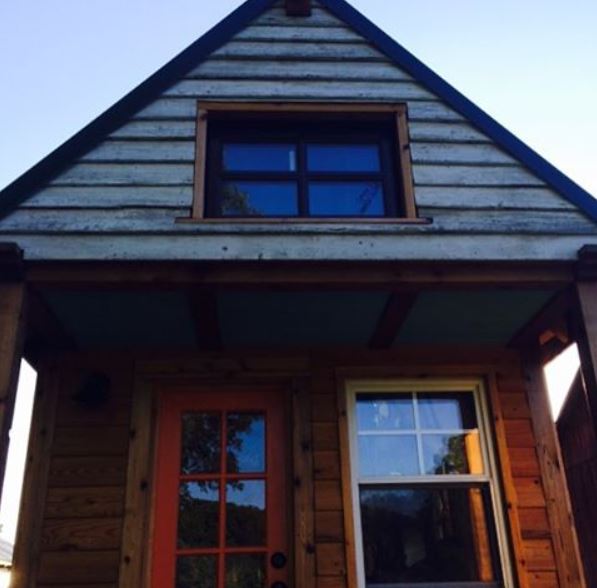
Christian and Alexis of Tiny House Expedition made their dollars stretch during their tiny house build.
Ideally, if you’re ready to build within a year, you should have enough funds saved up to at least get started. If you’re not careful, a tiny house can become a money pit if you don’t budget and track your expenditures.
My plan is to build in stages. I’ll first finish the exterior, so that the unfinished inside is safe from the elements. I can then take my time finishing the interior and saving up for some nicer appliances. Since I live in Charlotte and it’s pretty warm here, I might even move in early and live in the house while I’m still working on it to pour even more money into the build. I’m planning for the build to take a long time, but I know I’ll have a more rewarding learning experience that way.
In terms of saving money, it’s important to have a savings account just for your tiny house so that your funds don’t get mixed up and accidentally spent. I know that I’m the kind of person that will spend all my savings if they’re accessible and unallocated. I use SmartyPig.com to keep my tiny house savings separate, which is free and easy to use and I can’t recommend it highly enough.
Tips:
- Keep your house as small and simple as possible.
- Always budget 10% – 15% more for materials.
- Anything custom will cost you a bundle – especially windows and doors.
- The exception to this rule is trailers. Instead of buying a tiny house trailer, order a custom trailer direct from a manufacturer, and hire a welder to add any extra details. You will save thousands of dollars.
- Compact appliances often cost as much or more than conventional appliances, so budget accordingly!
So what are the next steps as I move toward building my tiny house? Tune in next time for part two of this topic!
Your Turn!
- Which step will be the easiest for you?
- Which step will be more challenging?
That’s a cozy looking floor plan! Pattern Language is a great book, very good recommendation.
Good luck!
Settling on a single floor plan will be my greatest challenge. Ha!
This is the summer I finally get to play with sticks and nails instead of pencils and paper. 8 years of saving, planning, drooling over other people’s builds (usually causing a change in plans) and umpteen scale models later, this is finally it. The Nouveau Shackteau approaches its true nascence. Another good thing to do is line up some help from friends and family. I’m doing a lot of prefabbing then will transport the pieces to the site and hopefully get a dried in shell up in one weekend (with help)then I can work on the inside at my leisure.
That’s a great plan too, Alice! Best of luck to you – 8 years of planning will certainly pay off.
Now that I know this thing works I can start. 39 plans in a folder. I like that. And this is why. I want all of the Tiny House people out there to remember this: One of the rules that I live by and it works for me is this. There are many more ways to get it wrong then there are to get it right! No matter what the job is, that is the rule.
Having friends or knowing people who are building or thinking about building a Tiny house is a must. I am still looking for them. Without much success, I should add. The only Tiny House that I have seen had the bathroom in the living room. I should say the toilet was in the living room. Some of you might think that is ok, but I put that in the mistake column. That plan should have been removed from their plan folder. I wish that I could find Tiny House people within 100 miles of me because I could go visit and see what ideas they have come up with. Al
Lol yeah no one really wants to be in the living room watching tv while another person is taking a duce. I have seen 2 examples of that. One in a large bedroom in my old KY home. It was a big old chair. You take off the cushion and there is a hole in the bottom for you to go and a metal pan underneath. Highly advise against this unless making all materials easy to clean and sanitize as the tour guide said people caught disease this way through the fabric.the other one was in a gypsy wagon. It’s small and most people can’t fix a toilet into their layout but this one was cool. It’s a metal chair that’s high with cushion and a back and wrap around foot rest and she made a curtain right under the seat cushion to hide her compost toilet. She said since its small and it’s only her living there and sometimes it’s too cold or rainy to go outside, it works for her. And you would never know you were sitting on top of the toilet unless she told you. ?
I realize this is not the proper reply for this forum, however, I honestly thought your jeans were very flattering the moment I saw them. I laughed when I read your caption underneath the picture.
Ha! I’m glad I made someone laugh with that caption.
Now, all you need to do is to make sure that you have settled on your final plan as it relates to the over all length of the trailer frame. Then you need to find a place to put the trailer before you buy it. You have to make sure that the frame will work for you as far as the steel members are laid out for the floor and the outside walls. I thought that I got a deal on the trailer frame that I bought until I realized that I wanted 6 more feet of length and I will need to add more steel members for the floor and the walls and I will have to move the axles back about 3 feet because that is where the entrance door is going to be and the wheels are up above the level of the floor. Al
Great post! I can definitely relate and went through all those steps! I remember carrying around a tape measure everywhere, and I spend a lot of my free time in bed too. I was constantly jumping up randomly to measure the height of the toe kicks in the kitchen or the distance from wall to toilet, things like that.
You mentioned carrying around a measuring tape. I carry one where ever I go. And a really funny thing happened to me the other day. I had to have a rib put back in place by a chiropractor and when I went into the restroom at his office I noticed that the layout of the toilet and the sink were exactly what I had come up with for my tiny house plan. I got to see it in person and I was able to tell if the sink and toilet were to close to each other. I think that I could put them about 4 or 5 inches closer and they would still be fine. I was going to make that distance between the two walls 6 feet 6 inches, with the toilet on one wall and the sink on the other. I was trying to make a somewhat normal bathroom. Al
I know that I want the tiny house living for all the right reasons. But I’m having trouble getting hooked up with other tiny house people.
Thanks for all the info. Been looking and studying tiny houses for years and hope to build one soon.
Hi! Do you plan to move your tiny house around a lot? I’m looking into building one in the Pilot Mountain Area but more permanent. Trying to sort through building codes and such.
I think building the inside of the house will be the easiest for me. I plan to have everything moveable so I can feng shui as needed and change the layout whenever I want. I have to put temporary things in to keep everything from moving on the road.
The hardest will be getting rid of things. Luckily I have a farm, house, garage and barn so I will have somewhere to build and store things that I can’t fit in the tiny house. I have so much extra stuff that after this one, I might just build another tiny house!
I live just north of Charlotte, I’d be very interested in an update or possibly contact info for some other local enthusiasts.
Your my favorite person right now.
Been searching for better tiny house advice, and yours is actually good! Not ambiguous, not “oh buy these ten things from me to find out what toilet I bought,” but actually useful and helpful right off the bat. (:
Thanks!
You’re** freaking dang it.
Thank you for sharing! I’m just starting to seriously consider life in a tiny house, and found your post very helpful!!
Time to get the tape measure out I think.
Where can I find small tiny house for under $30,000
Looking for a prefab small tiny house one bedroom 30000 to 40000
I know I want to do this but I’m kinda paralyzed at the moment with all of the options and definitely overwhelmed by the process of finding land and utilities. AHHHH! Thank you for sharing this info, it’s super helpful in trying to sort out my thoughts.
I would think the main prbleum is where to put a tiny home, do you have a piece of land, water, electricity/gas, sewage?